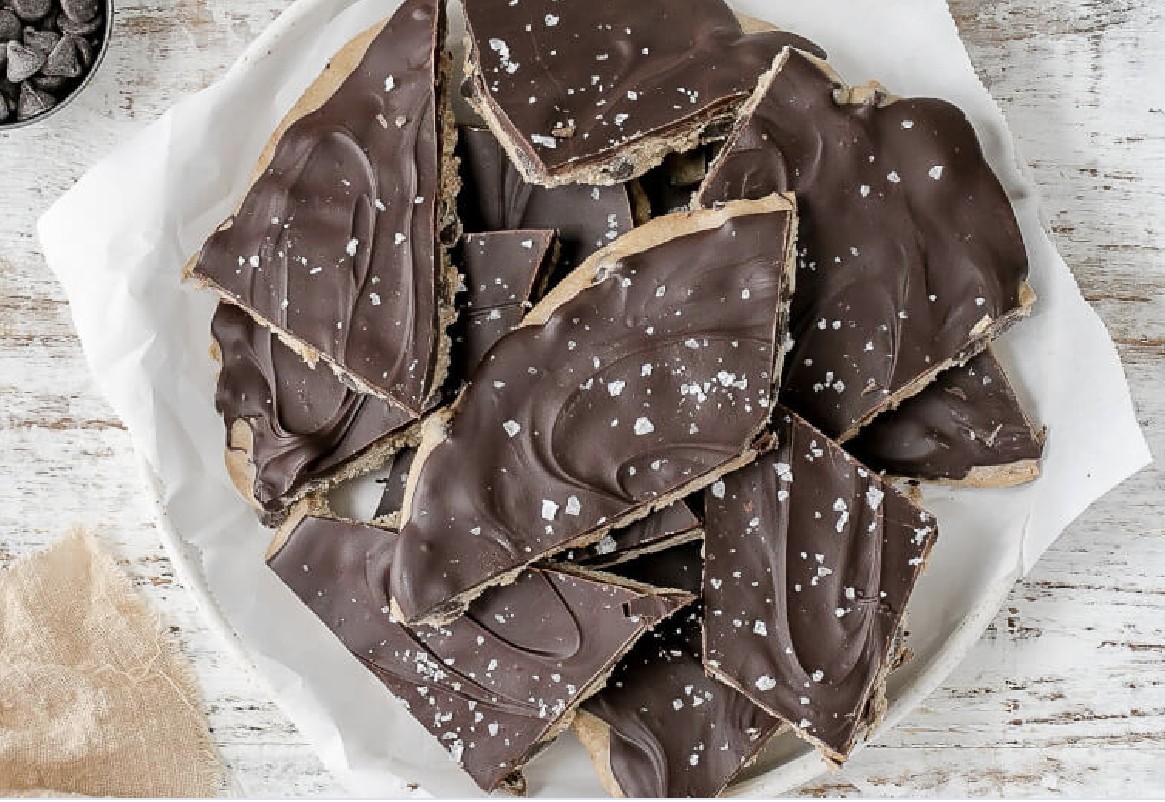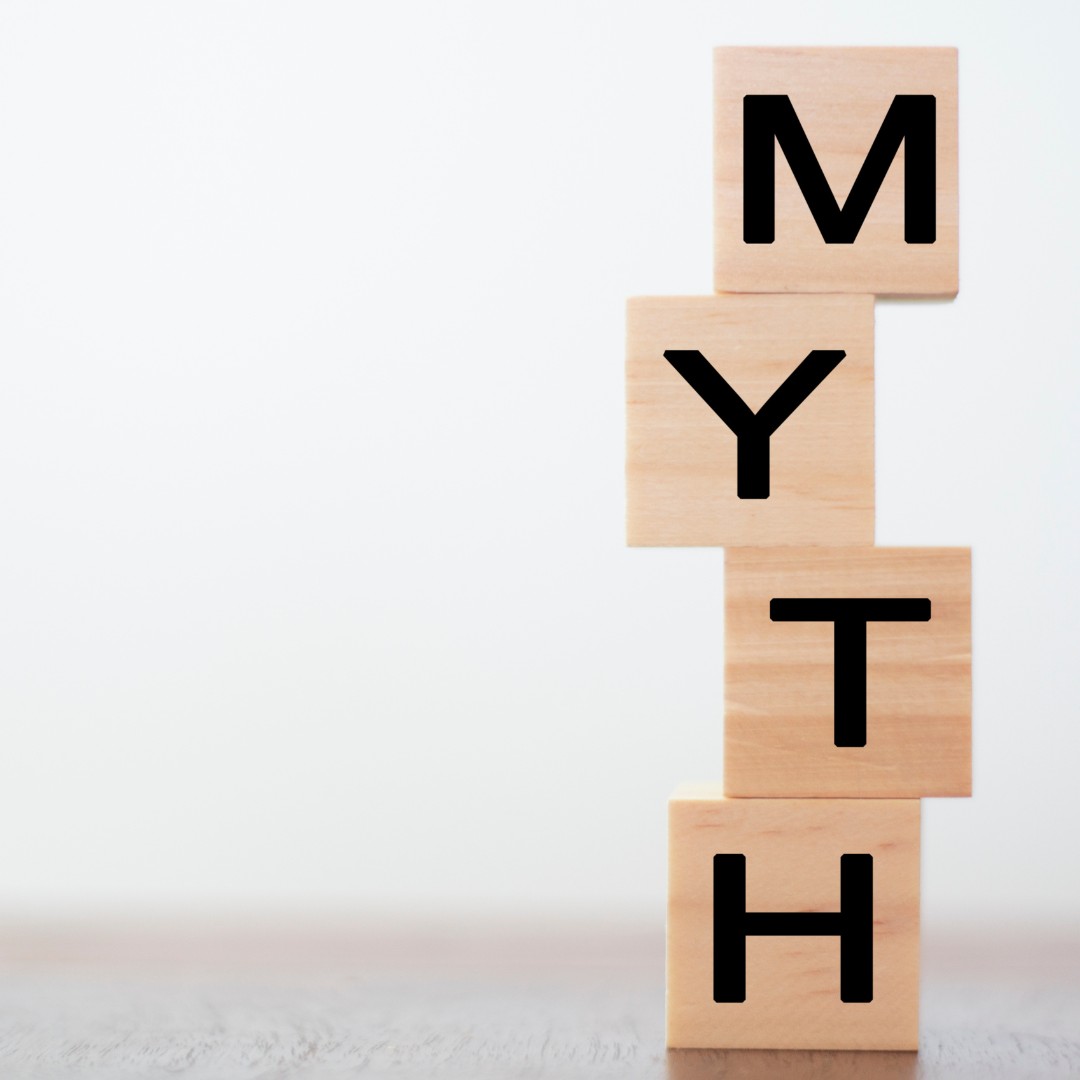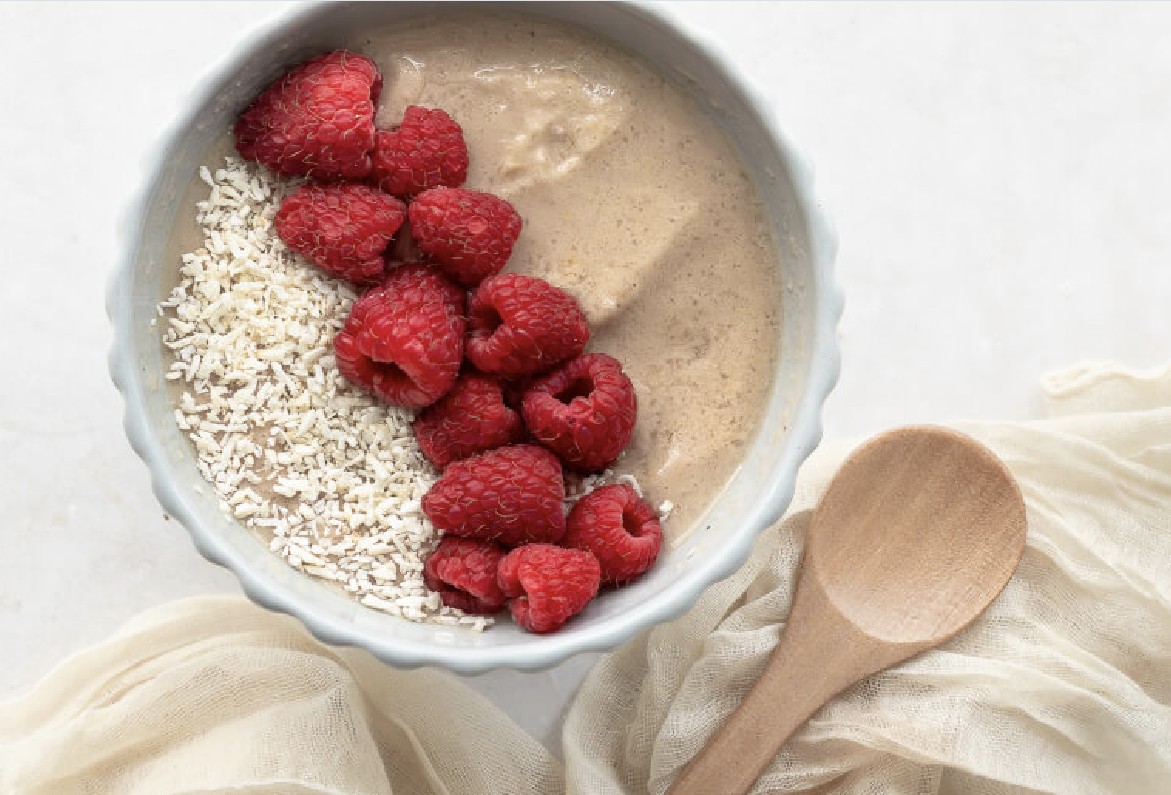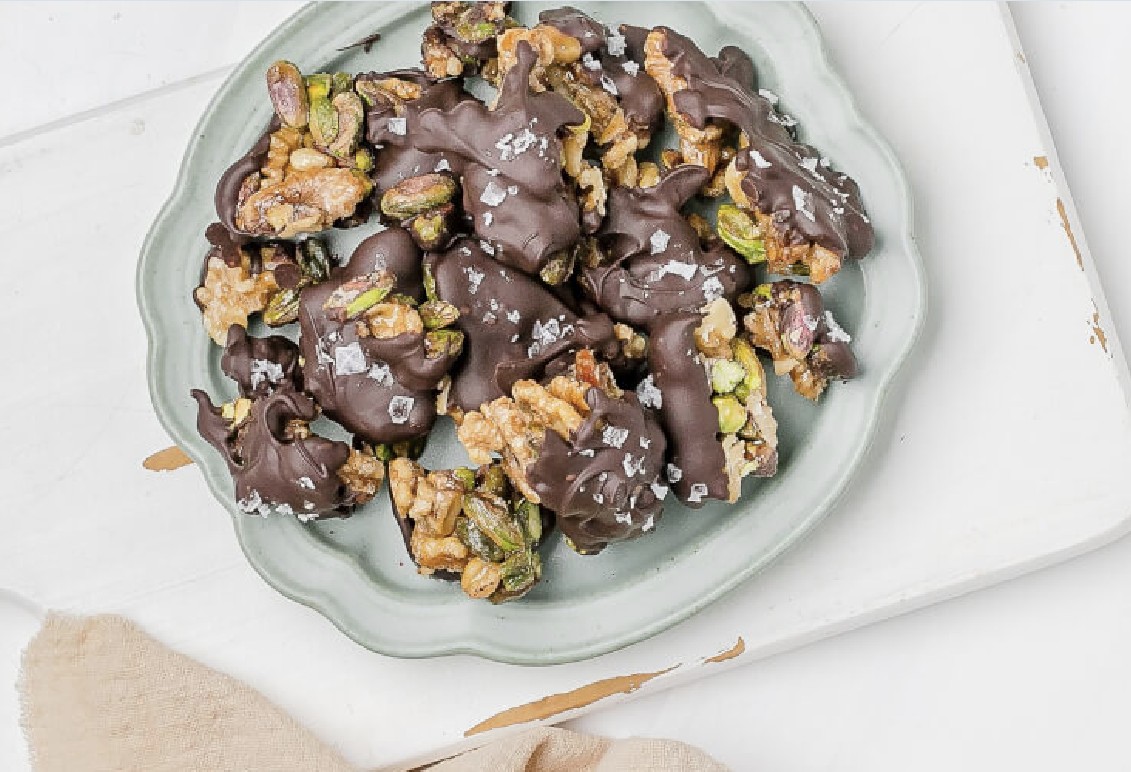
This recipe supports heart health with pistachios and walnuts that provide heart-healthy fats to help maintain healthy cholesterol levels, while dark chocolate and walnuts add antioxidants that protect your cells from everyday stress. The balanced mix of healthy fats, protein, and carbohydrates offers steady, sustained energy, and the touch of maple syrup and dark chocolate adds natural sweetness without sacrificing nourishment.
Ingredients:
- 1 cup Pistachios
- 1 1/4 cups Walnuts
- 3 tbsps Maple Syrup
- 1/2 tsp Vanilla Extract
- 1 tsp Cardamom
- 1/2 cup Dark Chocolate Chips
- 1/2 tsp Coconut Oil
- 1/4 tsp Sea Salt (flaky)
Instructions:
- Preheat the oven to 350ºF (180ºC) and line a loaf pan with parchment paper.
- In a medium-sized bowl, combine the pistachios, walnuts, maple syrup, vanilla, and cardamom. Mix well.
- Add the nut mixture to the prepared loaf pan, pressing down with a spatula. Transfer to the oven and bake for 25 minutes, until lightly toasted.
- Let the mixture cool completely in the pan, ideally one hour, before removing. Break into clusters.
- Line a small baking sheet (or large plate) with parchment paper.
- Melt the chocolate and coconut oil in a saucepan on low or in the microwave for 30-second intervals.
- Dip each cluster into the melted chocolate, garnish with salt, and place on the prepared baking sheet. Transfer to the fridge for 10 to 15 minutes or until the chocolate has set. Enjoy!
10 servings
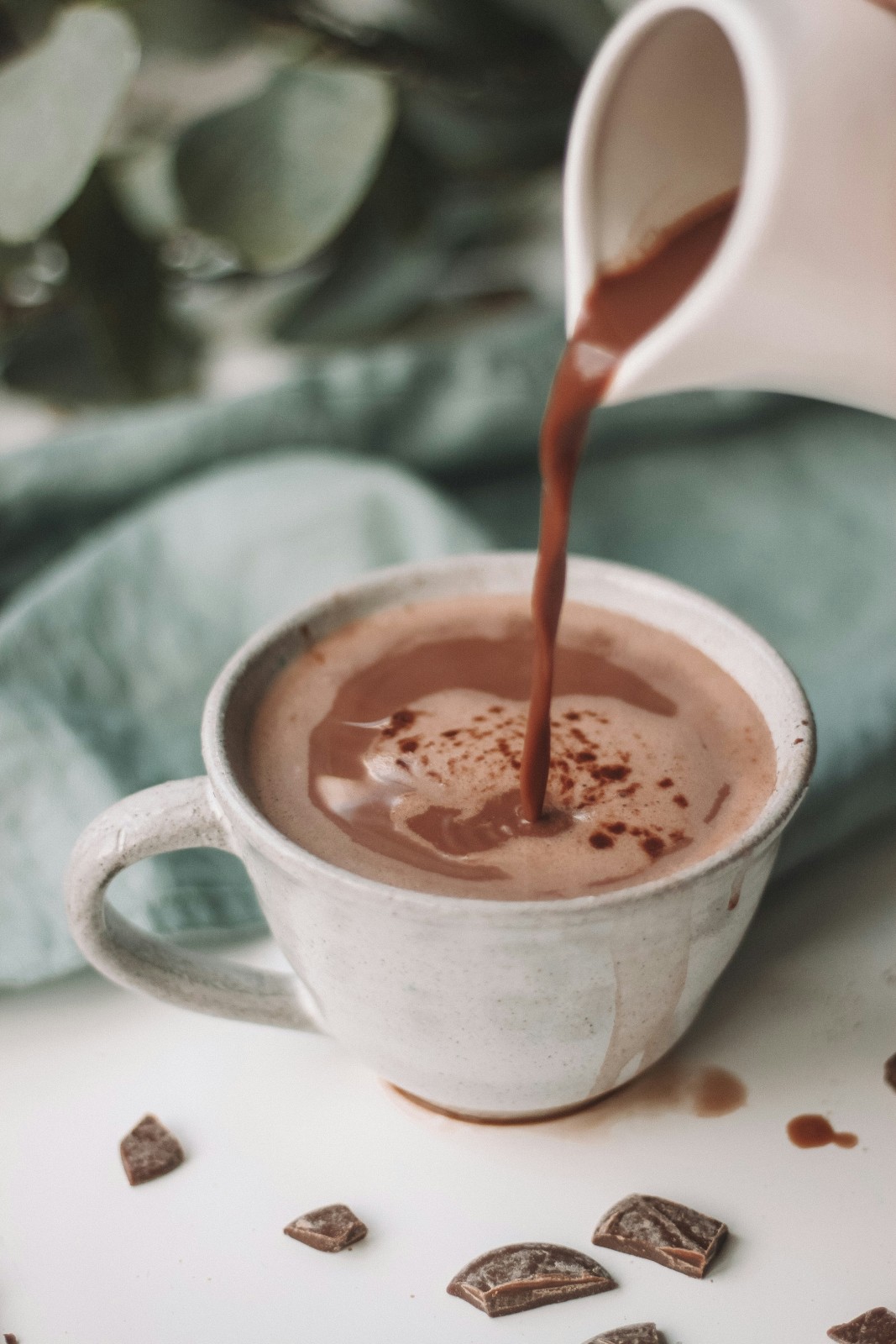
❄️ Winter Self-Care That Supports Your Hormones (and Your Sanity)
For those of you who know me, you know I’m not a fan of cold, grey weather (hence why we lived in Florida for a while). But now that we’re in a place that actually has seasons-thankfully winter here is only 2–3 months and not the 8-month Chicago version-I’m leaning into this season with more intentional self-care.
And not just the bubble bath kind (though no shade to that obviously).
I’m talking about cozy, nervous-system-soothing, hormone-supporting winter rituals that actually help you feel like yourself again.
I’m talking about cozy, nervous-system-soothing, hormone-supporting winter rituals that actually help you feel like yourself again.
Here’s what’s been in my rotation lately:
🪔 1. Diffusing grounding essential oils during meditation
Cold weather + low light = my mood needs some extra love.
I’ve been making space to sit in silence and breathe while diffusing oils like cedarwood, frankincense, or clary sage. These oils are known for their calming, hormone-balancing effects-and they help me regulate my nervous system and cortisol after long, overstimulating days.
I’ve been making space to sit in silence and breathe while diffusing oils like cedarwood, frankincense, or clary sage. These oils are known for their calming, hormone-balancing effects-and they help me regulate my nervous system and cortisol after long, overstimulating days.
🍫 2. Hot chocolate that actually nourishes me
I’m still a cozy girl at heart-so give me the blanket, the Hallmark movie, and the hot chocolate... but make it blood sugar-friendly.
Lately I’ve been loving this brand, and I doctor it up with:
Lately I’ve been loving this brand, and I doctor it up with:
- Bone broth
- Unsweetened almond milk (I like this one if I don't make my own)
- A little splash of this creamer - it's a pretty great creamer ingredients and taste wise
It tastes like indulgence but fuels like medicine. My inner child and my inner nutritionist are both thriving.
👶 3. Hugging the baby tighter
This might sound simple, but the oxytocin hit from snuggling your baby (or your dog, partner, or heating pad) literally helps regulate cortisol and support hormonal balance. Physical touch = free therapy.
💡 4. Red light therapy on dark, cloudy days
When the sun disappears, my energy plummets.
Using red light therapy a few times a week has helped with mood, skin health, and even sleep quality. This is the one I love this one and I try to use it in the evenings while drinking my tea or journaling.
Using red light therapy a few times a week has helped with mood, skin health, and even sleep quality. This is the one I love this one and I try to use it in the evenings while drinking my tea or journaling.
🧖♀️ 5. Castor oil packs for grounding + detox
This one’s been a game-changer. Castor oil packs over the liver or lower belly help support detox pathways, reduce inflammation, and calm the nervous system-especially in the luteal phase. I’d love to pop mine on in the evening while reading but in reality I apply it over my liver and wear it overnight while I'm sleeping - way easier personally!
🫧 6. Magnesium soaks or foot baths
When I don’t have time for a full bath (which, let’s be real, is often), a magnesium foot soak is the next best thing. It helps with sleep, bloating, cramps, and stress-all of which get worse in the winter if I’m not careful.
Winter might not be my favorite season, but with the right rituals, it feels less like survival mode and more like a reset. These small things don’t just help me feel better-they help my hormones feel safe, too.
If you’re craving deeper support through winter (and beyond), come join us in Reset & Rebalance-doors open on January 12th!
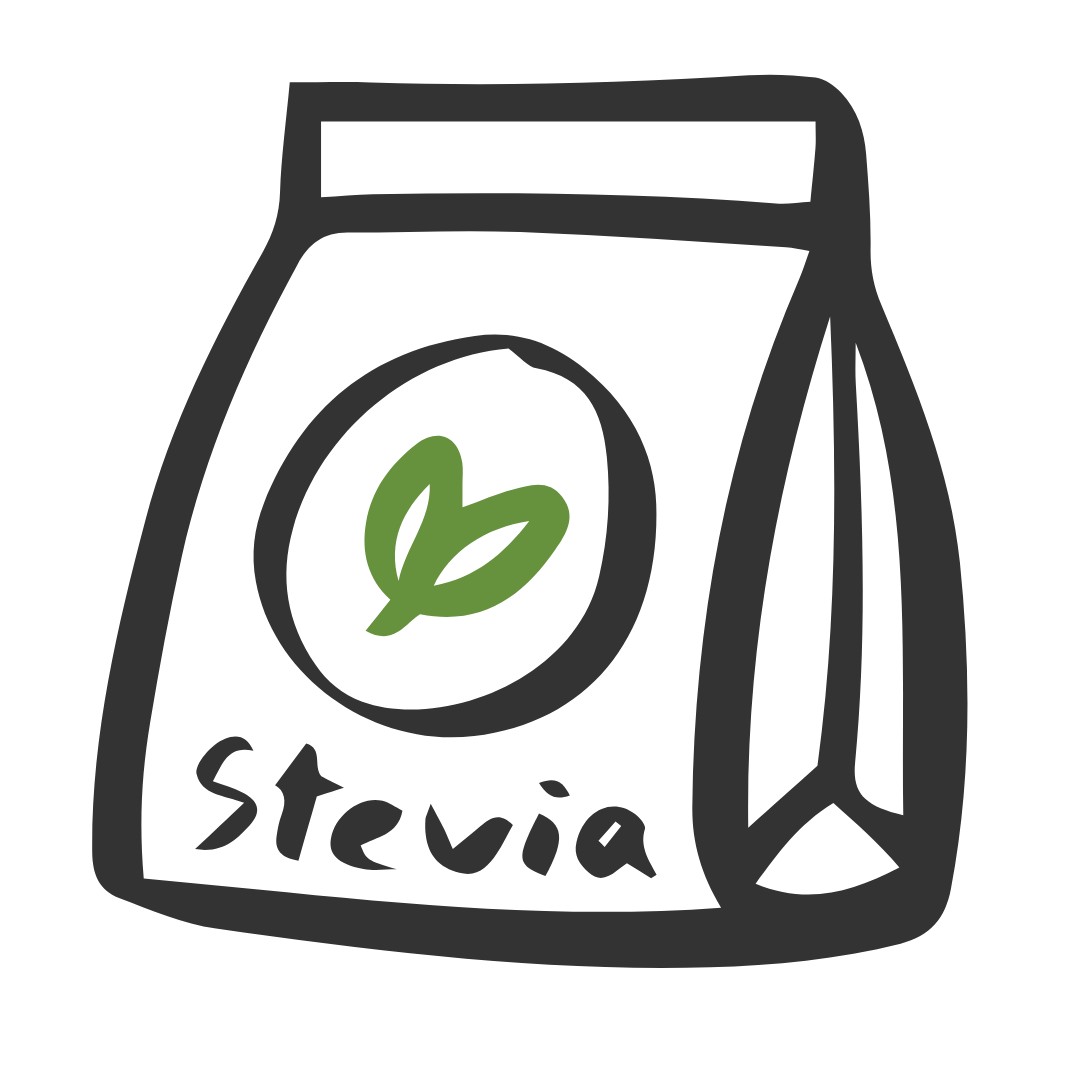
If you’ve been trying to take better care of your hormones — maybe you’re dealing with low energy, weird mood swings, acne that makes you feel sixteen again, or cycles that seem to change every single month — you’re not imagining things. Your hormones really do touch everything… your gut, your mood, your skin, and yep, even how your body handles sugar.
But here’s the part most women never hear about:
That “healthy” protein bar, greens powder, or iced latte you’ve been sweetening with stevia?
It might be working against your hormones instead of supporting them.
And before you panic — no, this isn’t about throwing away half your pantry. I promise.
So… what’s the deal with stevia?
Your ovulation, mood, and overall hormonal rhythm are controlled by a ridiculously smart feedback loop between your brain, your gut, and your ovaries. They’re constantly talking to each other. And anything that interrupts that communication? Your body notices.
Stevia — especially whole-leaf, “natural” versions — is usually marketed as the safer swap for sugar. But early research suggests it may not be as harmless as we’ve been led to believe.
Some studies show stevia may:
- Influence estrogen-sensitive pathways
- Shift your gut microbiome in ways that affect hormone detox
- And in animal studies, even reduce fertility and implantation rates
And because so many “sugar-free” products sneak in other hormone-disrupting sweeteners like sucralose, it’s easy to think you’re making a healthy choice while your body is quietly saying, “Hey… something feels off.”
Do you need to panic-clean your entire pantry? Absolutely not.
This is really about awareness — especially if you’re navigating things like:
- PCOS
- Missing or irregular periods
- Low energy
- Mood dips around your cycle
- Or you’re simply trying to support better ovulation
Your hormones aren’t dramatic or complicated. They aren’t overreacting.
They’re responding.
When something doesn’t feel right — the bloating, the cravings, the fatigue, the skin stuff — your body is communicating with you. Learning how to read those signals is the first step to feeling like yourself again.
Want to understand your cycle in a way that actually makes sense?
If you’re ready to get in sync with your hormones, your energy, and the way your body responds throughout the month, I made something for you.
GRAB MY FREE CYCLE SYNCING RECIPES
Inside, I walk you through each phase of your cycle and show you exactly how to support your hormones, mood, and ovulation without the overwhelm.
Because your body isn’t broken. It’s brilliant.
And when you know how to work with it, everything gets easier. 🌿
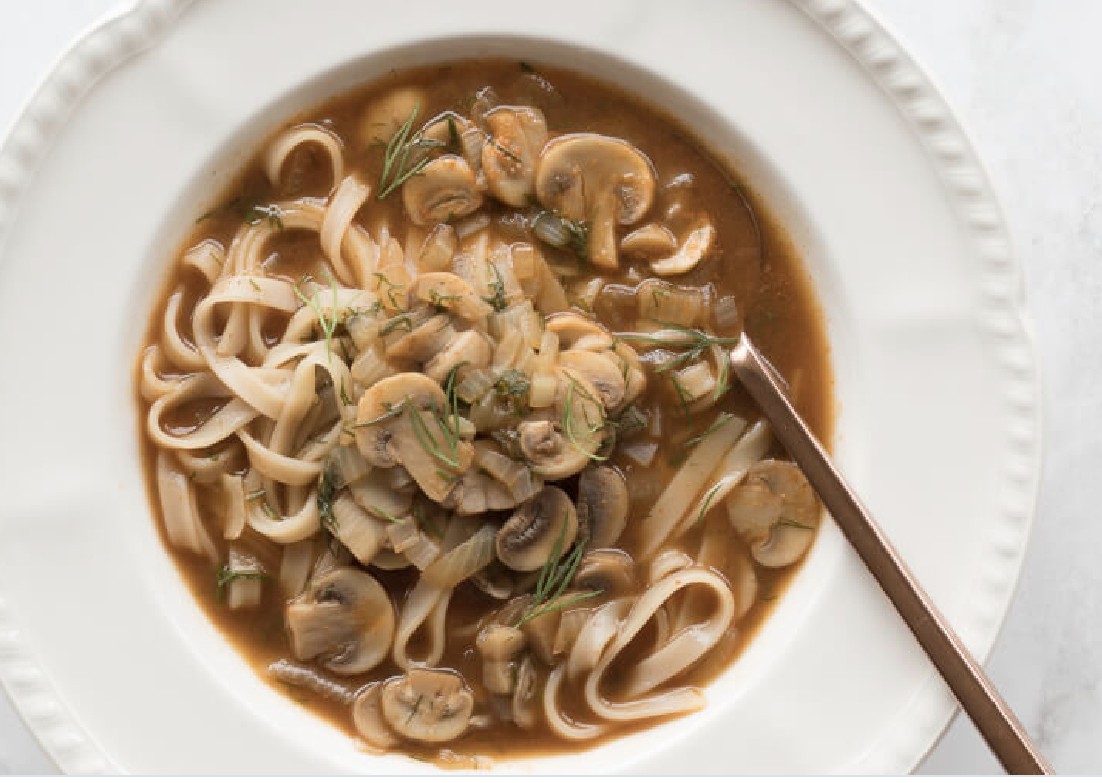
This mushroom noodle soup is one of those quiet, comforting meals I make when my body needs a reset and my brain needs a break. It started as a simple “what’s in the fridge” dinner and quickly became a go-to on nights when I want something nourishing but not heavy.
The mushrooms and fresh dill bring in antioxidants that help combat everyday stress on the body, while the veggies and rice vermicelli noodles add gentle fiber to support digestion and gut health. And the warm vegetable broth? It helps with hydration and electrolyte balance — especially on those days I realize coffee has been doing most of the heavy lifting.
Nothing fancy. Just a cozy, grounding soup that feels like taking care of yourself in the middle of real life.
Ingredients:
- 1 Yellow Onion (medium, chopped)
- 2 cups Mushrooms (sliced)
- 4 cups Vegetable Broth (divided, plus more for cooking)
- 1 1/2 tsps Tamari
- Sea Salt & Black Pepper (to taste)
- 4 ozs Rice Vermicelli Noodles (thick, dry)
- 3 tbsps Fresh Dill (chopped, plus more for garnish)
- 1 tbsp Paprika
Instructions:
- In a large non-stick pot, add the onions, mushrooms, and a splash of broth. Cook over medium heat for five to seven minutes, stirring occasionally, until softened. Add more broth as needed to prevent sticking. Season with salt and pepper.
- Add the remaining broth and tamari and bring to a boil. Add the noodles, dill, and paprika. Reduce the heat to medium-low and simmer for five to eight minutes, or until noodles are cooked to your desired tenderness.
- Divide evenly into bowls. Garnish with additional dill and enjoy!

The season is festive - but your hormones might not be.
Let’s be honest: the holiday season is full of joy, but also full of stress, sugar, and skipped routines. Between late nights, rich meals, emotional triggers, and the pressure to make everything magical, your hormones are likely getting the short end of the stick.
But it doesn’t have to be that way.
With a few science-backed tweaks, you can support your cycle, energy, and mood through the chaos of the season. Even better? These habits will set you up beautifully for the new year.
1. Manage Stress to Support Progesterone & Cortisol
The holidays often ramp up stress (hello, family dynamics, financial pressure, and travel), which raises cortisol levels. When cortisol stays high, it can suppress the production of progesterone, your calming, stabilizing hormone.
"The HPA axis and HPO axis are closely intertwined. Chronic stress can lead to menstrual irregularities and infertility." - Frontiers in Endocrinology, 2022
What to do:
- Build in 5-10 minutes of nervous system regulation daily (breathwork, walks, or legs-up-the-wall).
- Say no when you need to. Boundaries reduce cortisol and create safety in the body.
2. Prioritize Sleep & Light Exposure for Hormonal Rhythm
Circadian rhythm controls the release of hormones like melatonin, cortisol, and even insulin. Late nights, blue light, or jet lag can throw it off.
What to do:
- Stick to consistent sleep and wake times when possible.
- Get 10 minutes of morning sunlight to anchor your rhythm.
"Circadian misalignment impairs glucose tolerance, insulin sensitivity, and reproductive hormone patterns." - Current Opinion in Endocrine and Metabolic Research, 2021
3. Balance Blood Sugar to Protect Estrogen & Insulin
Overindulgence in sugar or alcohol, skipping meals, or relying on refined carbs leads to blood sugar crashes. These swings disrupt insulin, and insulin resistance can lead to hormone imbalances like PCOS.
What to do:
- Focus on protein, fiber, and healthy fats at every meal.
- Eat regularly to avoid sugar crashes and keep energy steady.
"Postprandial glycemic response modulates inflammation and reproductive hormone function in women." - The Journal of Clinical Endocrinology & Metabolism, 2020
4. Move Daily (But Keep It Gentle)
You don’t need punishing workouts to feel good. In fact, overtraining during a stressful time can make hormonal symptoms worse.
What to do:
- Walk, stretch, or do gentle yoga. Movement improves insulin sensitivity, digestion, and stress hormones.
"Moderate exercise reduces systemic inflammation and cortisol reactivity." - Exercise Immunology Review, 2021
5. Listen to Your Cycle
Even if you're in the luteal phase during the holidays, or your period hits on Christmas Eve (because, of course), your body is still communicating.
What to do:
- Keep tracking: mood, sleep, cravings, energy.
- Respect your body’s signals instead of pushing through.
"Cycle awareness allows for more adaptive self-care and supports menstrual cycle regulation." - Journal of Psychosomatic Obstetrics & Gynecology, 2020
TL;DR: Your Hormone Holiday Toolkit
- 💆 Breathwork, boundaries, and sunlight
- 🥦 Balanced meals with protein and fiber
- 🧘 Daily gentle movement
- 😴 Prioritized rest and circadian support
- 📆 Cycle tracking (even if it feels chaotic)
These simple shifts protect your energy, cycle, and sanity this season.
And if you’re ready to go deeper?
My next round of Reset & Rebalance starts January 12th
This is your chance to heal your hormones from the inside out - with a plan built for your body.
- ✅ Nervous system & mineral support
- ✅ Gut & hormone repair
- ✅ Real-time food & lifestyle strategy
- ✅ Small group coaching + daily tools


